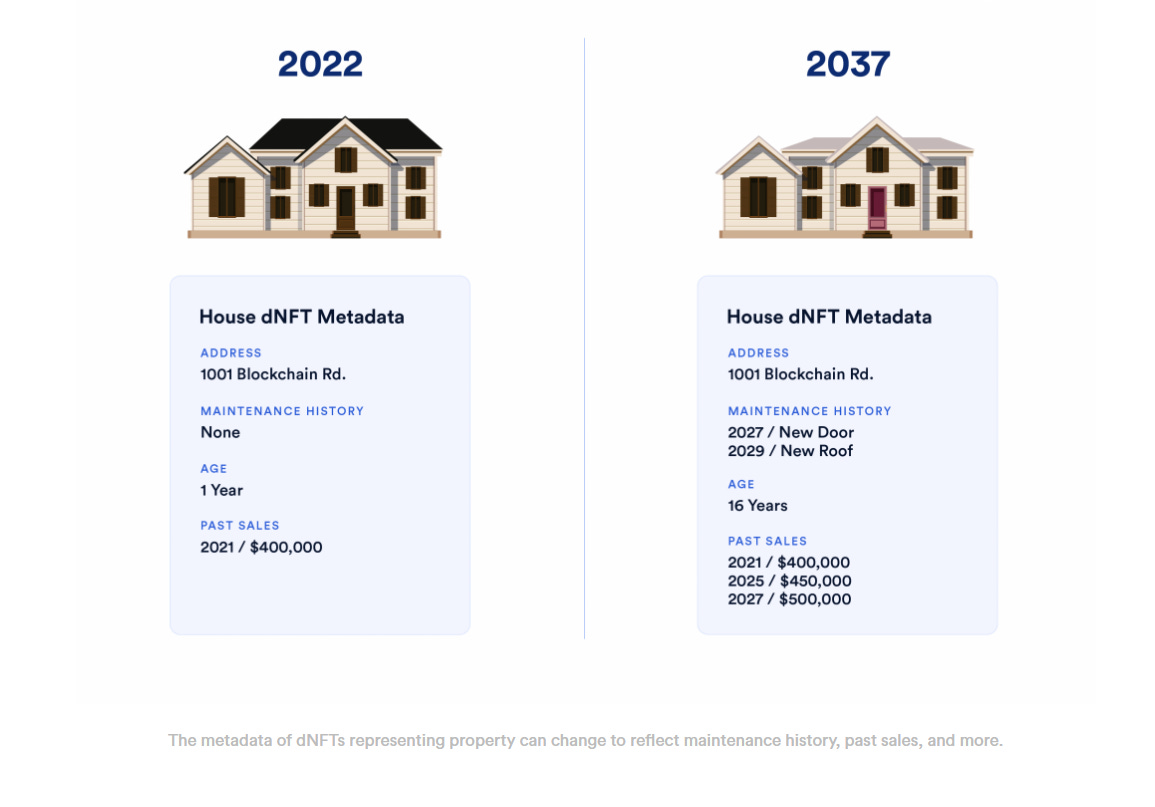Dynamic NFTs Overview
dNFTs are still in their infancy, learning more about them can make you an early mover on a developing narrative
Dynamic NFTs are the next generation of conventional NFTs. dNFTs are still in their infancy, learning more about them can make you an early mover on a developing narrative. We provide you with everything you need to know about dNFTs.
In this post you will learn:
What are Static NFTs?
What are Dynamic NFTs?
How does @chainlink support Dynamic NFTs?
Potential use cases of dNFTs
Benefits of Dynamic NFTs
Should NFT projects use the Static or Dynamic NFT model?
Before we get started... Want early access to our research threads? Sign up to our Substack to receive daily coverage on everything you need to know about going on in the crypto directly in your inbox:
Done? Now let's dive in!
Every #NFT has a unique token ID & contract address and they cannot be changed once the NFT is minted. The owner can thus prove that they own the original NFT even if it is replicated.
NFTs can also represent a wide range of digital objects such as gaming skins, art, music, videos. They can be attached to the NFT in the form of 'METADATA' to represent the respective digital object.
There are two main types of NFTs:
Static NFTs
Dynamic NFTs
What are Static NFTs?
Static NFTs are non-fungible tokens that cannot be changed or modified once they are minted. Once static NFTs are minted, they are immutable and permanent on the blockchain.
The metadata attached to static NFTs is fixed at the time of creation. As a result, they are effective in situations where the underlying data does not need to be modified in the future. Static NFTs are mostly used for art projects, blockchain games, photography, etc.
Advantages & disadvantages of static NFTs
Advantages
They are immutable
They are much easier to verify
They require less storage and bandwidth requirements
They are more secure since they cannot be modified in the future
However, the biggest disadvantage is that they cannot be updated or changed in the future. Therefore, a new NFT must be created by the projects whenever the data needs to be updated. Static NFTs are therefore less flexible for projects that want to modify their NFTs.
What are dynamic NFTs?
Dynamic NFTs are non-fungible tokens that can be changed or updated once they are minted. A change in a dynamic NFT implies that 'ONLY' the metadata attached to the dynamic NFTs can be changed.
Thus, dynamic NFTs retain a unique tokenID and contract address while having the ability to update the metadata in the future. The instructions and conditions for changes in metadata are encoded within the NFT smart contract before minting the NFT.
Dynamic NFTs store the metadata in a mutable format. The metadata can be updated manually by the owner or based on the conditions that are set in the smart contract. But how does the smart contract know about the information to be updated from the real world?
How does Chainlink support dynamic NFTs?
Dynamic NFTs constantly need a reliable source of information to modify or update the metadata of the #dNFT. The smart contracts modify the metadata with the help of external data sources called ORACLES.
The dNFT metadata changes that are triggered on certain conditions can either be on-chain or off-chain. However, blockchains are incapable of obtaining off-chain data from the real world.
@chainlink provides off-chain data and computation services that can be used as inputs to trigger dNFT updates. Chainlink acts as a bridge between the two disconnected worlds, enabling automated, decentralized, and engaging dNFT processes to be built.
@chainlink provides an off-chain data delivery service called CHAINLINK DATA FEEDS. It is an off-chain data delivery service that can securely deliver sports results, weather readings, or any other kind of data to be used to update a dNFT.
@chainlink also provides a smart contract automation service called CHAINLINK KEEPERS. It can be used to trigger dynamic NFT changes when predefined conditions are met. It essentially helps dNFT projects build autonomous and decentralized dNFT processes.
Potential use cases of dNFTs
dNFTs can be used for in-game items that upgrade over time as the player progresses through the game.
dNFTs can be utilized for sports game passes that upgrade over time dependent on the user's attendance at sporting events.
dNFTs might be beneficial for schools that want to permanently keep and update individual student information in their database.
dNFTs can be useful for tokenized real-world assets, where several metrics change on a regular basis.
Benefits of Dynamic NFTs
dNFTs help NFT projects grow since it provides the opportunity to innovate and evolve the NFT over time. The project can keep people interested by constantly adding new features, which will also result in a sticky user base.
dNFTs offer greater flexibility for real-world NFT usage since it can autonomously update itself based on real-world input triggers. Thus, a new NFT will not be needed when the real-world data is updated for the same user.
dNFTs provide businesses with meaningful insights and analytics about how users engage with their products. This data can help companies/projects optimize their products and make changes depending on customer feedback.
Should NFT projects use the Static or Dynamic NFT model?
The type of NFT for the project will be determined by the NFT project's characteristics and its use cases. If one wants to produce an iconic, everlasting NFT artwork, the static NFT model is preferred.
However, if one wants to create an NFT asset that needs to be modified and updated on a regular basis, then dynamic NFT is probably the right choice. The project must ultimately look forward and anticipate its future to decide on the type of NFT to mint!
Subscribe to receive our weekly newsletter and in-house research content!
Please Share, Leave Feedback, and Follow Us on Twitter, Telegram, and LinkedIn to stay connected with us.






saeidbati1365